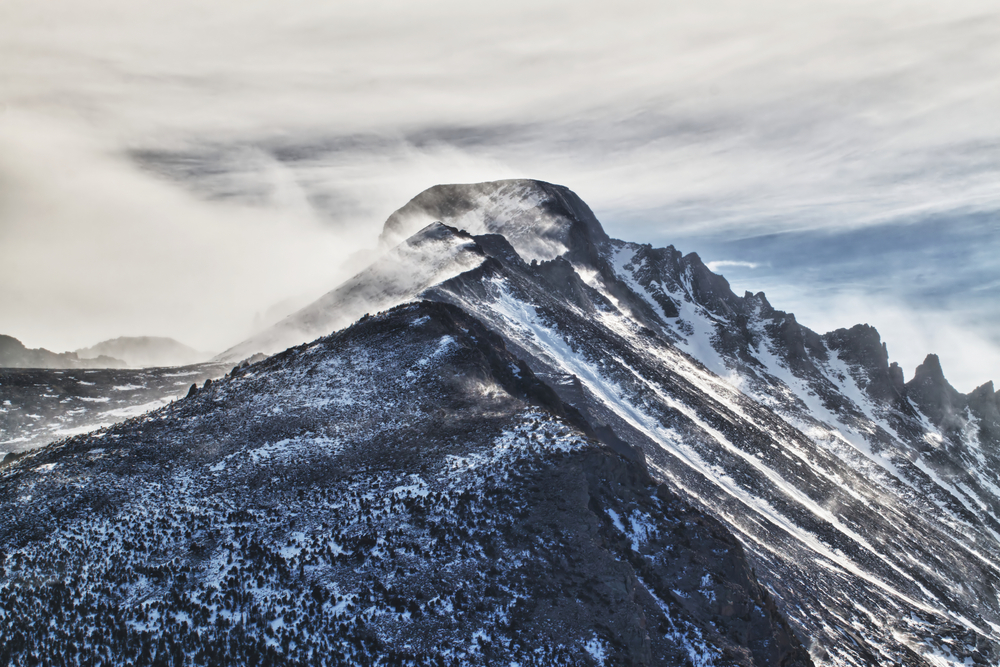There’s a reason so many of us obsess over our apparel and layering systems. Mother Nature can be an utter and complete bitch. For most of us, spending hundreds or even thousands of dollars on our technical outerwear and apparel is simply a given and a small price to pay in order to brave the worst conditions the mountains can throw at us. And if one hunts the mountains consistently enough they will throw their absolute worst our way at some point.
And yet, what good is a wardrobe full of fancy, new age gear if your mind and body can’t cope? Good gear can certainly save your life but it won’t help you pack-out an animal in the dark after being up for sixteen hours. It won’t keep you focused when every fiber in your body is screaming with exhaustion four days into a ten-day hunt. And it won’t teach you to survive and keep pushing on rationed water when you can’t find a high country water source.
Mountain hunts by nature are extreme, unpredictable and unforgiving at the best of times. As mentioned in previous articles we call this a dynamic environment. And if we’re going to thrive in these dynamic environments we need to both train and think dynamically. If we only train under perfect conditions with optimal nutrition and hydration, and adequate sleep to support our physical efforts are we realistically training for the hardships of an extended backcountry hunt? The answer of course is no.
The good news is it doesn’t take high-minded, unconventional training techniques or methods to achieve this realism. Basically, just start shaking up your routine and subjecting yourself to training sessions, hikes, and even day-to-day tasks under less than ideal conditions.
Hiking at night or in the pre-dawn blackness is a forgone conclusion on most mountain hunts so this is an easy way to incorporate suboptimal training conditions into your routine. Hiking with only the beam of a headlamp to light the way can and usually will effect your vision and this is not something you want to experience for the first time on a mountainside with an animal on your back. For added effect, go for a night hike or trail run after a heavy training session in the gym with nothing more than an energy bar to keep you going.
Many hunters struggle to sleep well in the backcountry so if you count yourself among this group, train accordingly. Have a favourite hike or timed training session that’s part of your regular routine? Try it on less than 6 hours sleep or even better less than 4 hours sleep. Hell, try it hungover (aka dehydrated)! Have a tough day or week at the office and feeling drained mentally and physically? Don’t use it as an excuse to skip a workout, hit it hard instead. Don’t expect your best effort but give your mind and body a chance to experience physical stress when you feel like there’s no way you could set foot in the gym or on the trail.
From a nutritional standpoint, some of you may follow very strict diets for the bulk of the year. This is very hard to maintain on an extended backcountry hunt and you do not want your body re-adapting to processed sugars and carbs during the hunt. If you’re a paleo, slow-carb or similar diet follower it is essential to re-incorporate processed nutrients into your diet well before the hunt. This likely will not feel good and almost certainly will have an effect on your training and performance. But that’s the point.
Intermittent fasting (16-24 hours once or twice every couple of weeks) is another excellent method for training the body to perform both mentally and physically in a nutrient deficient state. It’s well documented that we can survive for weeks without food (water is a different story) and this is due in large part to our fat stores. The problem is most of us need to “train” or more specifically re-train our bodies to use these fat stores in the absence of other nutrients, especially within the context of physical exertion. This is a very deep topic and one that you should talk to your doctor about if you have any pre-existing physiological conditions but for most of us simply skipping breakfast and training that morning is a highly effective way to cue the system to use these fat stores. It’s a virtual certainty that at some point on an extended mountain hunt you will be functioning in a semi-fasted state. We’ll cover this topic in-depth in the coming months.
The examples above are far from a complete list and to be clear, we’re not saying you should do this for every training session. But implementing suboptimal training conditions on a semi-regular basis is an important aspect of realistic, dynamic training for backcountry hunting. Get creative and don’t be afraid to push your limits and your body when you least feel like you should. Mother Nature doesn’t pull many punches.



